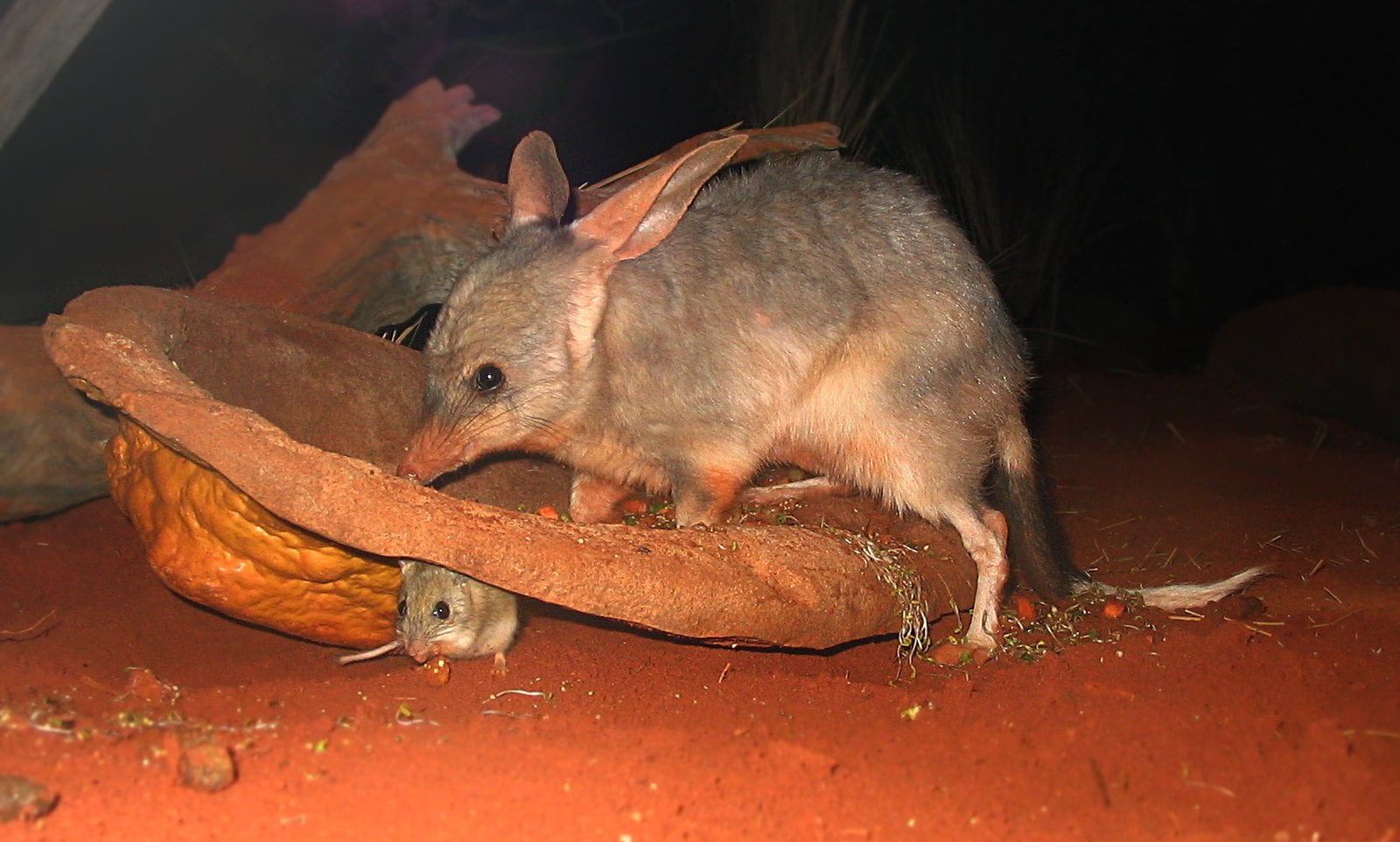The bilby is a unique and fascinating animal that has captured the attention of people worldwide.
Sometimes referred to as the rabbit-eared bandicoot, a bilby is a small, nocturnal marsupial that is native to Australia. With its distinctive long ears, long snout, and large, powerful forearms, the bilby is a truly fascinating animal.
In this article, we will explore the physical characteristics, habitat, behaviour, and cultural significance of the bilby, as well as discussing the threats it faces and the conservation efforts underway to protect this unique animal.
Physical Characteristics
Bilbies are small animals that weigh around 0.7-2.5 kg and measure around 29-55 cm in length. They have soft, greyish fur on their back, while their undersides are white or cream-coloured. The bilby’s most distinctive feature is its long ears, which can be up to 12 cm long and help the animal detect predators and prey. Bilbies also have a long snout that they use to forage for food in the ground, and their large, strong forearms are used for digging burrows and finding food.
Habitat and Distribution
Bilbies are found in arid and semi-arid regions of Australia, where they can be found in a variety of habitats, including deserts, grasslands, and woodlands. Bilbies are most commonly found in Western Australia, the Northern Territory, and Queensland. Unfortunately, bilby populations have declined dramatically over the last century, and the animal is now classified as endangered. The main threats to bilbies are habitat destruction, predation by feral cats and foxes, and competition with introduced herbivores.
Behaviour and Diet
Bilbies are nocturnal animals that are active at night, spending their days sleeping in their burrows. They have adapted to their nocturnal lifestyle by having excellent eyesight in low light conditions. Bilbies are omnivores, feeding on a variety of insects, seeds, and other small animals that they dig up from the ground. Bilbies are also known for their long tongues, which they use to scoop up insects and other small prey.
Cultural Significance
Bilbies have a special place in Indigenous Australian cultures, where they are seen as a symbol of abundance and renewal. They are also important to modern Australian culture, with the bilby often used as a symbol for conservation efforts and the protection of endangered species. Bilbies have also become popular in popular culture and media, with the character of “Blinky Bill” being one of the most famous examples.
Conservation Efforts
Due to their endangered status, there are several conservation efforts underway to protect the bilby. These efforts include habitat restoration projects, the establishment of protected areas, and the breeding and release of captive-bred bilbies into the wild. These conservation efforts have been successful in some areas, with some populations of bilbies showing signs of recovery.
Random Facts About Bilbies
- Bilbies are nocturnal animals that spend their days sleeping in burrows.
- They have excellent eyesight in low light conditions, making them well-adapted to their nocturnal lifestyle.
- Bilbies have long, rabbit-like ears that can be up to 12cm long and help them detect predators and prey.
- They use their long, pointed snouts to forage for food in the ground, and their large, strong forearms are used for digging burrows and finding food.
- Bilbies are omnivores, feeding on insects, seeds, and small animals that they dig up from the ground.
- Bilbies have long, sticky tongues that they use to scoop up insects and other small prey.
Here are some of the most common questions people ask about Bilbies:
Why are bilbies endangered?
Bilbies are endangered due to habitat destruction, predation by feral cats and foxes, and competition with introduced herbivores.
Where do bilbies live?
Bilbies are found in arid and semi-arid regions of Australia, including deserts, grasslands, and woodlands.
What is the cultural significance of bilbies?
Bilbies have a special place in Indigenous Australian cultures, where they are seen as a symbol of abundance and renewal. They are also important to modern Australian culture, with the bilby often used as a symbol for conservation efforts and the protection of endangered species.
How can I help protect bilbies?
There are several ways to help protect bilbies, including supporting conservation efforts, spreading awareness about their plight, and reducing the use of products that contribute to habitat destruction.
Are bilbies related to rabbits?
No, bilbies are not related to rabbits, despite their long ears and rabbit-like appearance. Bilbies are marsupials, while rabbits are lagomorphs.
Can I see bilbies in the wild?
Bilbies are difficult to spot in the wild due to their nocturnal habits and endangered status. However, some conservation areas offer the opportunity to see bilbies up close in a controlled environment.
Feature image “Bilby at Sydney Wildlife World” by D Coetzee is marked with CC0 1.0.

